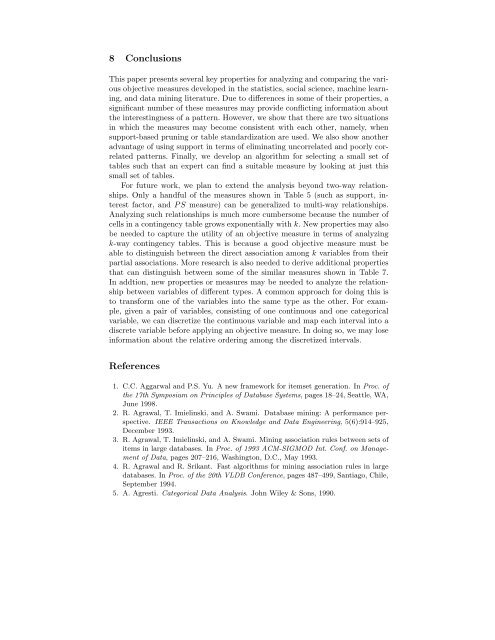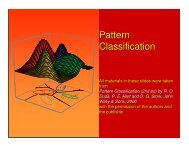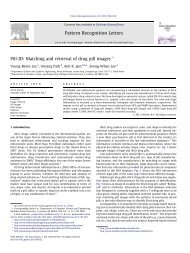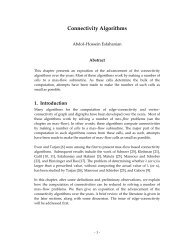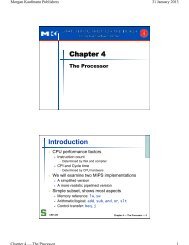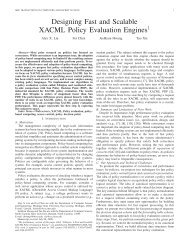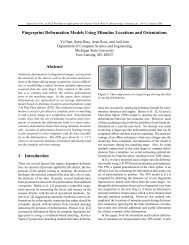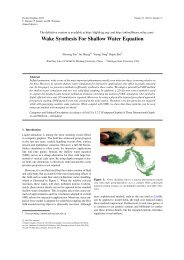Selecting the Right Objective Measure for Association Analysis*
Selecting the Right Objective Measure for Association Analysis*
Selecting the Right Objective Measure for Association Analysis*
Create successful ePaper yourself
Turn your PDF publications into a flip-book with our unique Google optimized e-Paper software.
8 Conclusions<br />
This paper presents several key properties <strong>for</strong> analyzing and comparing <strong>the</strong> various<br />
objective measures developed in <strong>the</strong> statistics, social science, machine learning,<br />
and data mining literature. Due to differences in some of <strong>the</strong>ir properties, a<br />
significant number of <strong>the</strong>se measures may provide conflicting in<strong>for</strong>mation about<br />
<strong>the</strong> interestingness of a pattern. However, we show that <strong>the</strong>re are two situations<br />
in which <strong>the</strong> measures may become consistent with each o<strong>the</strong>r, namely, when<br />
support-based pruning or table standardization are used. We also show ano<strong>the</strong>r<br />
advantage of using support in terms of eliminating uncorrelated and poorly correlated<br />
patterns. Finally, we develop an algorithm <strong>for</strong> selecting a small set of<br />
tables such that an expert can find a suitable measure by looking at just this<br />
small set of tables.<br />
For future work, we plan to extend <strong>the</strong> analysis beyond two-way relationships.<br />
Only a handful of <strong>the</strong> measures shown in Table 5 (such as support, interest<br />
factor, and P S measure) can be generalized to multi-way relationships.<br />
Analyzing such relationships is much more cumbersome because <strong>the</strong> number of<br />
cells in a contingency table grows exponentially with k. New properties may also<br />
be needed to capture <strong>the</strong> utility of an objective measure in terms of analyzing<br />
k-way contingency tables. This is because a good objective measure must be<br />
able to distinguish between <strong>the</strong> direct association among k variables from <strong>the</strong>ir<br />
partial associations. More research is also needed to derive additional properties<br />
that can distinguish between some of <strong>the</strong> similar measures shown in Table 7.<br />
In addtion, new properties or measures may be needed to analyze <strong>the</strong> relationship<br />
between variables of different types. A common approach <strong>for</strong> doing this is<br />
to trans<strong>for</strong>m one of <strong>the</strong> variables into <strong>the</strong> same type as <strong>the</strong> o<strong>the</strong>r. For example,<br />
given a pair of variables, consisting of one continuous and one categorical<br />
variable, we can discretize <strong>the</strong> continuous variable and map each interval into a<br />
discrete variable be<strong>for</strong>e applying an objective measure. In doing so, we may lose<br />
in<strong>for</strong>mation about <strong>the</strong> relative ordering among <strong>the</strong> discretized intervals.<br />
References<br />
1. C.C. Aggarwal and P.S. Yu. A new framework <strong>for</strong> itemset generation. In Proc. of<br />
<strong>the</strong> 17th Symposium on Principles of Database Systems, pages 18–24, Seattle, WA,<br />
June 1998.<br />
2. R. Agrawal, T. Imielinski, and A. Swami. Database mining: A per<strong>for</strong>mance perspective.<br />
IEEE Transactions on Knowledge and Data Engineering, 5(6):914–925,<br />
December 1993.<br />
3. R. Agrawal, T. Imielinski, and A. Swami. Mining association rules between sets of<br />
items in large databases. In Proc. of 1993 ACM-SIGMOD Int. Conf. on Management<br />
of Data, pages 207–216, Washington, D.C., May 1993.<br />
4. R. Agrawal and R. Srikant. Fast algorithms <strong>for</strong> mining association rules in large<br />
databases. In Proc. of <strong>the</strong> 20th VLDB Conference, pages 487–499, Santiago, Chile,<br />
September 1994.<br />
5. A. Agresti. Categorical Data Analysis. John Wiley & Sons, 1990.


